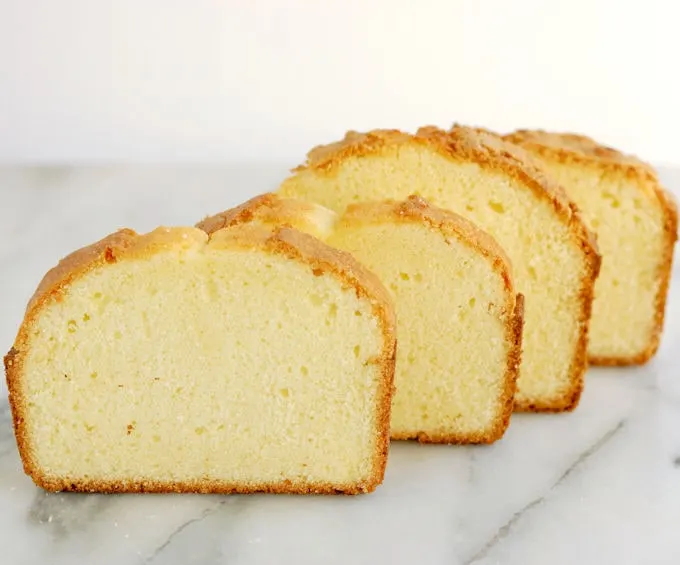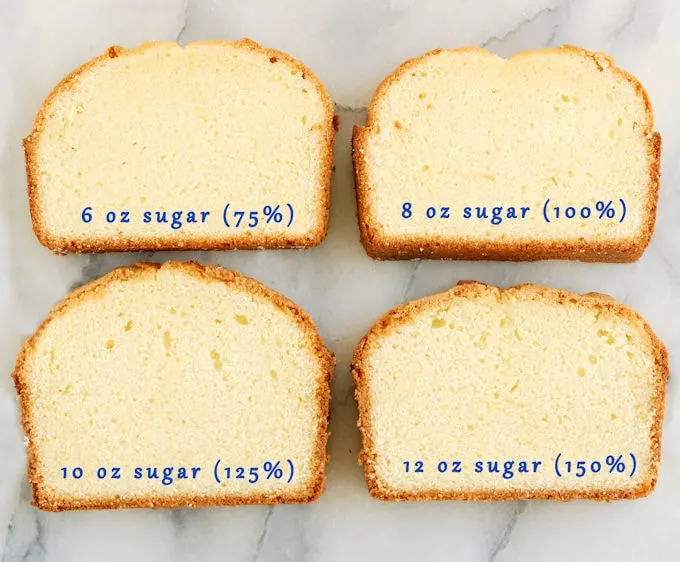🍰 The Role of Sugar in Cake Recipes
How sugar affects sweetness, texture, and structure.
Sugar’s sweetness is the most obvious reason it’s essential in baking, humans are hard-wired to crave it. But in cake batter, sugar does far more than add flavor.
It contributes to the cake’s texture, color, and moisture, and even helps aerate the batter. Understanding how sugar behaves will help you adjust your recipes for both tenderness and stability.

🍬 How Sugar Creates Tenderness
Sugar is hygroscopic, meaning it attracts and holds onto water molecules. That quality keeps baked goods moist and delays staling.
It also interferes with protein coagulation, weakening the gluten and egg-protein bonds that make a cake firm. The result is a softer, more tender crumb.
But balance matters. Too little sugar and the cake turns tough and dry; too much and the structure collapses under its own weight.
The goal is to find the sweet spot — enough sugar to tenderize without destroying stability.
If you’d like to understand why sugar behaves this way in different types of doughs and batters, see my full guide on Sugar as a Baking Ingredient for a deeper look at sugar’s chemistry, types, and how it affects browning and moisture across all baked goods.
⚗️ Sugar’s Role in Mixing and Aeration
In the creaming method, sugar crystals cut into the butter, creating tiny air pockets. Those pockets expand during baking, contributing to a light texture and fine crumb.
Finer-grained sugar (like caster sugar) aerates more efficiently and dissolves more easily, while coarser sugar can leave a rougher crumb or crunchy crust.
🧪 Testing Different Amounts of Sugar in Cake Batter
To see how sugar quantity affects cake texture, I baked four pound cakes, each identical except for the sugar level (measured as a percentage of flour weight):
- –25% sugar: Tough, dry, and not sweet enough.
- Standard (1:1 ratio): Balanced sweetness and structure.
- +25% sugar: Excellent flavor, tender crumb, and stable texture.
- +50% sugar: Sweet flavor but weakened structure; slightly flattened top and a pasty crumb.
Both the +25% and +50% cakes developed a thicker, sweeter crust that crackled slightly — undissolved sugar rose to the surface and caramelized. The effect wasn’t unpleasant but was noticeable.

🍯 Testing Alternative Sweeteners
I also tested honey and a Stevia-based sugar substitute.
- Honey: Lovely flavor but too much moisture — the cake partially collapsed and formed a gummy layer. I did work on fixing the texture. Visit this post to see my perfected Honey Pound Cake recipe.
- Stevia: Extremely sweet, dense, brittle, and with a bitter aftertaste. Reducing the amount might correct flavor, but not texture; sugar affects moisture, tenderness, and aeration in ways that substitutes cannot replicate.
If you must use sugar alternatives, the recipe must be re-engineered rather than simply swapped 1:1.
Baking Sense Tip
Sugar does much more than sweeten — it tenderizes, holds moisture, and lightens the crumb. Adjust sugar carefully: a small increase can enhance texture, but too much weakens structure.
🧩 Takeaway
Sugar is both a flavor enhancer and a structural modifier.
It sweetens, tenderizes, and adds moisture, but its real magic lies in how it balances the strong proteins of flour and eggs. Master that balance, and you can fine-tune any cake recipe for the ideal crumb and flavor.
📚 Continue Learning
This lesson is part of my Cake Recipe Science series, where I explain how each ingredient and mixing method shapes a cake’s structure, texture, and flavor. Explore the full series to learn how flour, sugar, eggs, fats, and leavening work together to create the perfect cake crumb.
← Previous: The Role of Eggs in Cake Structure | Next: Salt and Chemical Leavening →
